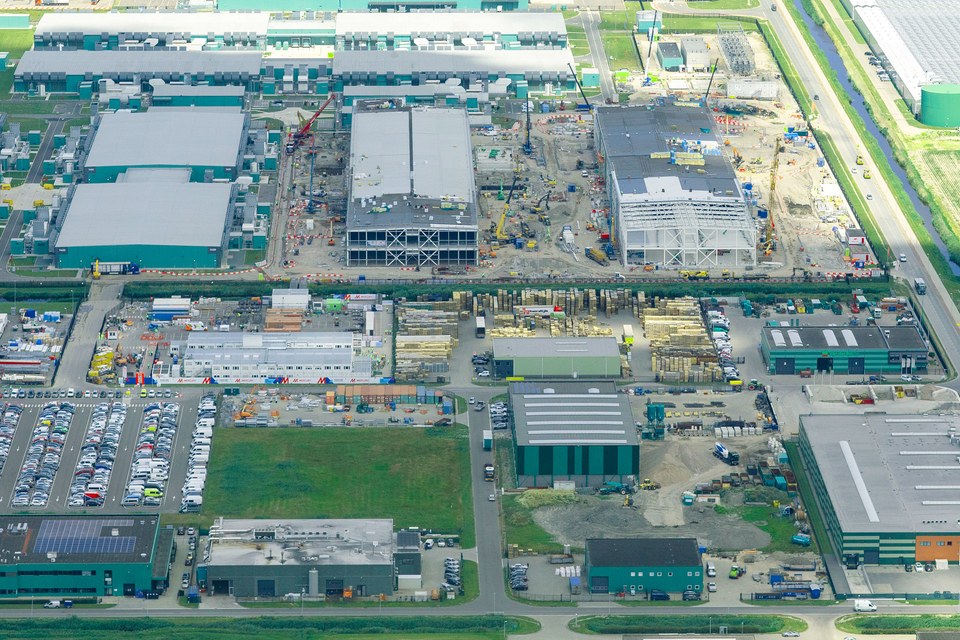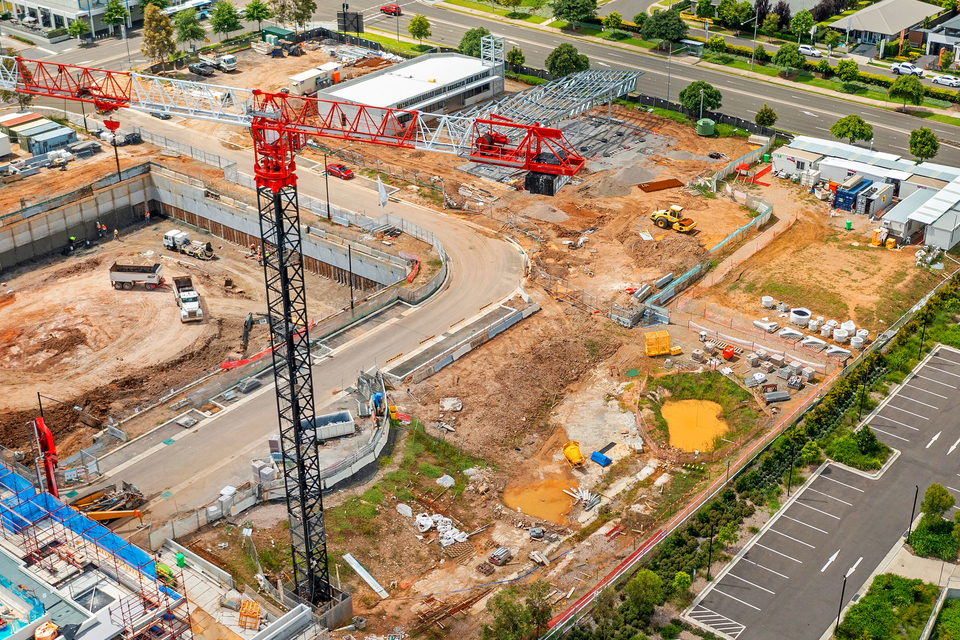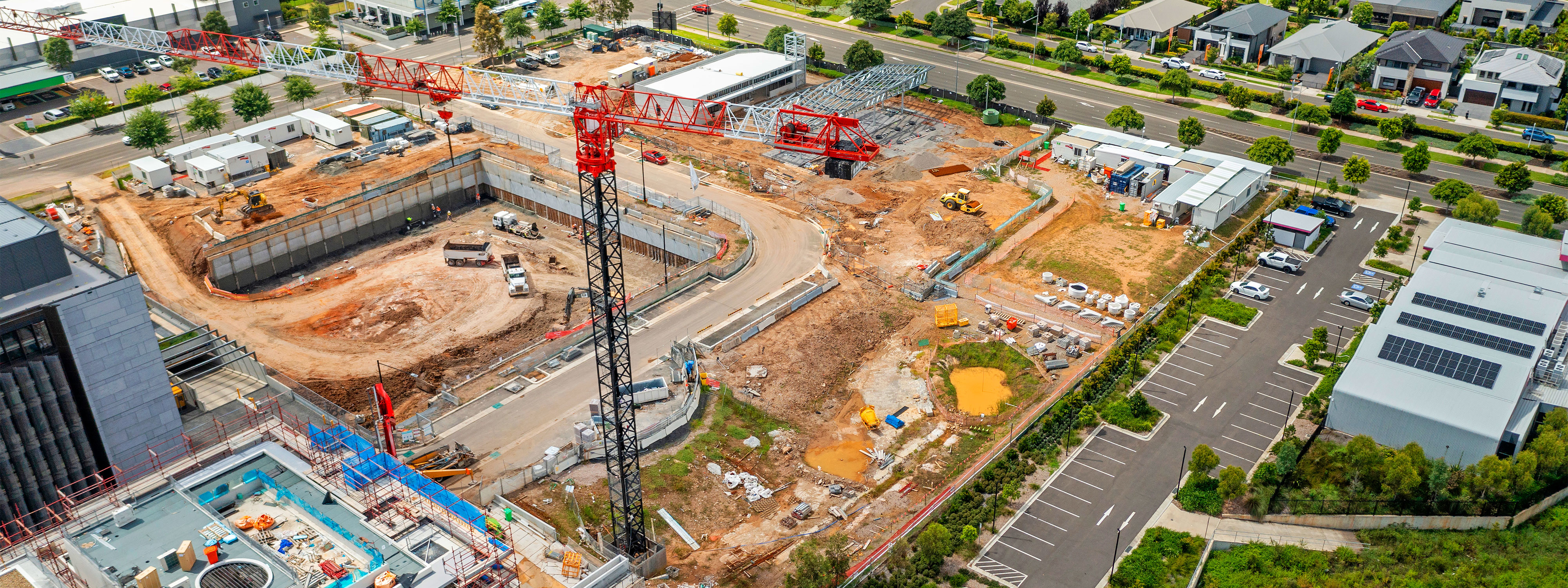Risk allocation and mitigation in energy projects
As the landscape for new energy projects evolves, parties are reassessing their appetite for risk and proactively seeking solutions to ensure success.

With an unprecedented momentum for the construction of new major projects linked to the shift away from fossil fuels and the development of a low-carbon economy, there is a real focus on construction law issues relevant to such projects
The widespread recognition of the urgent need to transition away from fossil fuels in energy systems, combined with a drive to decarbonize hard-to-abate industries, corporate and geopolitical tussles for supply chain security and market share for new green technologies, as well as various regulatory incentives and trade barriers, are collectively building unprecedented momentum for the investment in and construction of new major projects.
Such construction projects are no longer limited to wind, solar and other renewable energy; significant capital expenditure is also necessary to revolutionize heavy-emitting, fossil fuel-dependent industries such as steelmaking, alumina refining and cement production. This transformation may involve re-engineering existing plants to utilize clean energy sources and eliminate the need for coal and natural gas or adding carbon capture facilities to emitting plants.
As the transportation industry undergoes a revolution, entirely new industries are emerging, including pioneering projects for synthetic aviation fuel and gigafactories for batteries to support carbon-free mass transport. The rapid growth of the digital world, along with the current boom in Generative AI, is fueling the proliferation of data centers—one of the most energy-intensive building types—driving in turn their own need to limit electricity consumption and carbon footprint in order to achieve net-zero.
In this compendium, we take a closer look at the complexities and challenges of refurbishing and retrofitting brownfield industrial projects for a low-carbon future. We also explore methods for developing new data center projects in a more sustainable way, resulting in reduced carbon emissions.
The construction industry faces the challenge of finding appropriate and sustainable procurement and contracting structures for delivering these low-carbon projects. Many projects are of such scale or involve so many new technology risks that traditional procurement structures need to be revisited and challenged, often with the aim of better managing and sharing risks between the contracting parties, and ensuring the nurturing of new technologies.
We examine the growing use of multi-contract procurement structures in the US, and the use of collaborative contracting strategies in Australia, as well as an array of "green" contract provisions that have been introduced in FIDIC, NEC and JCT contracts to track ESG issues arising out of new construction projects.
Lastly, given that English law remains one of the dominant choices for governing major construction contracts in many jurisdictions, we conclude the compendium with an overview of the major recent developments in English construction law.
We hope you will find this compendium a useful and thought-provoking read, and look forward to exploring these themes as the landscape of major construction projects continues to evolve.
As the landscape for new energy projects evolves, parties are reassessing their appetite for risk and proactively seeking solutions to ensure success.

There is significant interest in investing into the rejuvenation of brownfield projects, but these projects face construction law challenges.

As the urgency to combat climate change escalates, the construction and engineering sectors are stepping up to the challenge. With a growing emphasis on net-zero solutions, contractual provisions tailored to sustainability are gaining momentum, highlighting a pivotal shift toward greener practices within these industries.

In recent years, escalation and price volatility have re-emerged in the global economy. The impact on large energy and infrastructure projects will be significant: Owners and contractors need to react and adapt.

As the demand for data storage grows, so does the need for more data centers with ever-increasing capacity. We examine new ways for developers to reduce energy consumption.

Amid the intricate landscape of Australia’s construction industry and geopolitical challenges looming large, collaborative contracting emerges as a powerful strategy for stakeholders across construction projects in Australia.

There have been a number of important developments in English construction law during the past two years, several of which relate to, or arose in the context of, building and fire safety. We examine their ramifications.


Amid the intricate landscape of Australia’s construction industry and geopolitical challenges looming large, collaborative contracting emerges as a powerful strategy for stakeholders across construction projects in Australia.
Explore Trendscape Our take on the interconnected global trends that are shaping the business climate for our clients.
The Australian construction industry is the nation's third-largest industry, contributing AUD360 billion to the economy annually and representing 9 percent of Australia's GDP. The Australian government is set to spend AUD 248 and above AUD 360 billion between 2021/22 and 2024/25 on construction projects.
However, project owners, developers, contractors and consultants in recent years have faced a number of challenges. These include: significant changes in market conditions such as unprecedented increases in inflation and interest rates; supply and demand constraints at various levels of the construction supply chain; the cascading impacts of global geopolitical disruption; and the historic and residual effects arising from the COVID-19 pandemic. These conditions have created an increasingly complex infrastructure delivery environment in Australia, where project delays, cost overruns and distressed projects and contractor insolvencies are common.
As a result, there has been a marked increase in the number of public procurers proposing more collaborative forms of contracting and more collective approaches to managing project risks through the use of alliance and other hybrid relational forms of contracting. Government agencies are increasingly willing to re-open the terms of existing agreements to address changing market conditions, and recreate balanced roles, where traditional risk allocation is no longer appropriate for the nature of the project or its risk profile.
There has been a marked increase in the number of public procurers proposing more collaborative forms of contracting and more collective approaches to managing project risks
Conventional contracting is a term that typically refers to a contractual structure that fully "wraps" the project delivery risk at a single point of responsibility. It is characterized by a fixed price contract with a limited list of price re-openers; hard obligations to achieve completion by a fixed completion date with limited exceptions for time relief; and a clear demarcation of risks and liabilities between the parties.
Most of the core delivery risks are allocated to the contractor with a structured claims regime in place —usually with time bars—under which the contractor is required to bring claims for time or cost relief.
A common criticism of conventional contracting is that it cultivates an adversarial environment between the project owner and contractor who, because of the terms of the contract, are inherently misaligned in relation to both their own commercial interests and to the project. Critics argue that the conventional model unfairly transfers risk to the private sector, resulting in unbalanced risk allocation and a financially unsustainable industry.
The adversarial nature of the construction industry has been epitomized in Australia by the emergence of a claims-based culture and concerns regarding its connections to lagging productivity, project disruptions and cost overruns. Indeed, recent studies have shown that an average of 2.6 percent of project costs are spent on construction project disputes.
AU$360 billion
The Australian construction industry is the nation’s third-largest industry, contributing AUD360 billion to the economy annually
A number of Australian projects recently disclosed significant cost overruns and project delays, and the resulting media scrutiny and community frustration have rapidly exposed some of the limitations of conventional contracting, including in relation to price certainty. In response, the New South Wales (NSW) state government has recently called for an independent review to evaluate the delivery models, cost overruns and project governance regimes adopted for the Sydney Metro City & Southwest project.
Various reasons have been put forward to explain the sources of cost overruns on major projects, such as major "optimism bias" during the initial planning stages, reduced risk appetite from contractors, significant price escalations for key materials and skilled labor and owner-directed scope changes. These challenges have led to a heightened interest in the potential for collaborative contracting to mitigate some of the core risks and challenges faced by industry participants in the delivery of major projects in Australia.
The term "collaborative contracting" is a broad term used to signify a range of contract models including pure alliancing, partnering and incentivized target cost regimes, among other delivery methods. These models are generally thought to offer an alternative to conventional contracting, although they can also be used in conjunction with some aspects of conventional contracting.
At the heart of the collaborative contracting model is the desire to move away from an adversarial approach to contracting and toward a more long-term and relationship-based approach. This can help cultivate a "best for project" approach to the delivery of infrastructure projects.
In a collaborative contracting setting, the collective knowledge of project owners and contractors is leveraged during the pre-construction, planning and design development phase of a project. This may have the effect of minimizing the risk of scope inaccuracies or interface risks at an early stage and avoid the need for owner-directed scope-related variations during the delivery phase of a project. In a recent study it was noted that, in Oceania, a major cause of cost overruns on projects was changes in scope directed after contract execution.
Collaborative contracting projects also enable an integrated, whole-of-project approach, where integrated leadership teams have greater visibility and responsibility over the whole of a project rather than just individual work streams. Supporters of collaborative contracting argue that this drives efficiencies in scope development, methodology and programming as well as improving the management of interface risk, particularly for large, complex projects where various works are being delivered at the same time.
Collaborative contracting also means regimes are applied to ensure the early identification of issues or claims by parties prior to issues escalating into a dispute resolution forum.
At one end of the collaborative contracting spectrum is "pure alliancing." Here, a public sector agency will work collaboratively with multiple private sector participants under a single multi-party agreement that includes clients, contractors, engineering and design consultants, and key subcontractors to deliver a major capital asset. A pure alliancing model is generally reserved for the delivery of high-value, high-risk projects where there are key unknowns that cannot be resolved during the business case or tendering stages of the project, prohibitive costs relating to the transfer of risks to the private sector, and an elevated need for parties to share knowledge and experience given the high degree of project complexity. This model has had limited application in Australia in recent years, with only modest usage on complex rail projects.
Pure alliancing contracts will typically comprise a single multi-party contract that is entered into between a project owner and non-owner participants (NOPs), which could include contractors, suppliers, designers and the operation and maintenance contractor. Project risks are shared between the project participants subject to each participant’s painshare cap—typically the NOPs’ fee—and cost overruns are typically borne by the owner. NOPs’ remuneration will comprise three key elements: direct and indirect project costs; the profit margin plus corporate overhead: and a performance-based payment adjusted to reflect the alliance’s actual performance against target cost and other non-financial outcomes of the project.
Express obligations are typically included for parties to unanimously undertake best-for-project decisions to achieve project objectives and act in good faith. Alliance contracts sometimes include a requirement that each participant waive their entitlement to bring legal proceedings against the other participants arising from the performance of the alliance contract, except where there is "willful" default by one party.
9%
The Australian construction industry represents 9 percent of the country’s GDP
Partnering is a more general concept in the Australian market, with a variety of applications of collaborative contracting models. These can range from parties entering into non-binding commitments to work collaboratively as part of a strategic alliance, or otherwise entering into a formal contractual arrangement that prescribes each participant’s role in the project and their capital commitments to the project.
A pure partnering model is uncommon in Australia, but it has seen some success in overseas markets including the US, Japan and the UK. It was first proposed by the Portland District of the US Army Corps of Engineers.
The degree of partnering required, and the legal ramifications of partnering for a project, will vary. Partnering may involve parties entering into a non-binding "Partnership Charter," which will govern the terms of the partners’ working relationship. Partnering may also involve partners entering into a formal contract, typically a bespoke agreement, governing the role of each of the partners in the delivery of a project, their respective partnership interests, capital contributions and return on equity investment and share of any project savings.
More commonly seen in Australia is the use of a hybrid incentivized target cost (ITC) model. This combines the concepts of an alliancing-style contract with the hard obligations and features of a fixed- price, fixed-time contract. The ITC model has gained significant traction in recent years.
Under an ITC, the fixed-price concept of a traditional EPC contract is replaced with a target outturn cost (TOC), which is an agreed estimate of reimbursable costs, corporate overhead and profit required to perform the works.
During the delivery phase, adjustments will be made to reflect any project painshare or gainshare allocated. Painshare or gainshare amounts can be allocated between the parties in a variety of ways. Some contracts split painshare evenly, up to a cap at which point the state incurs a higher threshold of "pain," while other contracts put no cap on contractor painshare. In a PPP context, an independent reviewer may be appointed to determine the project actual overturn cost (AOC) and assess the relevant painshare amount or gainshare amount payable to or by the contractor. To the extent the AOC exceeds the TOC by a set percentage, the state will then have a right to terminate the project deed or require the contractor to cure the default, subject to financiers’ rights.
In an ITC, parties are required to comply with the terms of a "collaborative behavioral framework," which will typically require parties to work together to achieve project objectives and collaborate on meeting specified performance outcomes. This can include provisions requiring parties to promote a one-team culture and collaborate in a manner that delivers value-for-money outcomes for the project.
The contractor is also required to meet or exceed key performance indicators (KPIs) and key results area (KRA) targets, and will receive a bonus or deduction from its fees based on its achievement of these KPIs and KRAs. ITCs include mechanisms to allow for adjustments to the TOC, KRAs, KPIs and dates for completion for specified events.
Under an ITC, parties are required to be transparent in all dealings and share all relevant information. Pricing and costs are claimed on a fully open-book basis to enable auditing and assessment of amounts payable under the contract. Parties participate in integrated project control group teams to discuss and monitor the performance of a project.
ITCs ensure the early identification of issues and expedited alternative dispute resolution mechanisms through expert determination or a dispute avoidance.
The renewed growth and interest in collaborative contract models in the Australian construction market reflects a pivot away from fixed-price and fixed-time contracts toward cost and risk-sharing regime
In March 2022, independent statutory advisory body Infrastructure Australia released its "Delivering Outcomes" report, setting out a proposed reform pathway for the Australian construction market. One reform proposed was the abandonment of traditional delivery models and the adoption of collaborative-style contracts—focused on outcomes and long-term relationships—an antidote to the constraints faced by the construction industry.
The call for collaborative contracting by industry has seen some early success in NSW and Victoria, where there has been a marked increase in the number of projects procured with a collaborative-style contract in recent years. Examples of collaborative contracting can be seen in the Sydney Metro Stations, Systems, Operations and Maintenance project, and the Sydney Metro City & Southwest, both using ITC models.
Indeed, a 2022 progress report published by the NSW government observed that from 2021 to 2022, the use of collaborative contracts increased from 18 percent to 30 percent, and the use of traditional or PPP-style contracts declined from 82 percent to 70 percent. The NSW government has also, in recent years, made public commitments to procure and deliver more major projects through collaborative contracting models and ensure projects adopt risk-sharing mechanisms to incentivize parties and not place contractor viability at risk.
The increased acceptance of collaborative contracting by the Australian government reflects an acknowledgement of increased market expectation and domestic pressure for shared risk approaches to contracting, as well as an understanding of the potential benefits of non-traditional contracting approaches from a value-for-money and quality perspective. Contractors have been increasingly enthusiastic in recent times in pushing back on conventional risk allocations and adopting more selective approaches to tendering. In response, public procurement agencies have been pivoting away from the familiarity of traditional fixed-price contracts and adopting more market-friendly models in order to attract high-quality bidding consortia.
One of the challenges that the Australian industry faces with the shift toward non-traditional contract models is the vast inconsistency in the forms and approaches used by public procurement agencies. The standardization of collaborative contracts in the procurement of public infrastructure will therefore be an important next step in the maturation of the Australian construction market, although this will of course only arise after a period of market testing.
Some attempts to standardize approaches to collaborative contracting have included the adoption of the NEC4 suite by Sydney Water, GC21 by Health Infrastructure NSW, and the development of bespoke alliance contracts by Transport for NSW, as used on the Barton Highway Upgrade Duplication project. Other initiatives have included the Department of Infrastructure and Regional Development’s publication of the "National Alliance Contracting Guidelines – Guide to Alliance Contracting," which provides guidance to public procurers, owners and advisers on the theory and implementation of alliancing.
The Victorian state government has also announced initiatives to develop guidance materials for collaborative contracting and to prepare a suite of standard form ITC and collaborative design and construct models. The confluence of public sector initiatives to standardize drafting and market expectations for more collaborative contracting have incrementally led to the emergence of market standard terms, particularly in the ITC context, for mega rail projects in Australia.
The renewed growth and interest in collaborative contract models in the Australian construction market reflects a pivot away from fixed-price and fixed-time contracts toward cost and risk-sharing regimes. While the traditional delivery methods of contracting are likely to remain highly relevant, the significant changes in market conditions, supply chain disruptions and geopolitical uncertainty in recent years has meant a rise in interest in alternative forms of contracting as a way of resolving challenges faced by the Australian construction industry.
The structures, approaches and value-for-money proposition supporting collaborative contracting continue to be tested and refined in the Australian construction market. It will therefore be important for project owners in Australia to carefully assess whether a collaborative approach to contracting is suitable for the project in question.
Careful due diligence on the key project risks from a technical, legal and financial perspective will remain important for the purposes of considering how those risks may best be managed from a scoping and pricing perspective.
White & Case means the international legal practice comprising White & Case LLP, a New York State registered limited liability partnership, White & Case LLP, a limited liability partnership incorporated under English law and all other affiliated partnerships, companies and entities.
This article is prepared for the general information of interested persons. It is not, and does not attempt to be, comprehensive in nature. Due to the general nature of its content, it should not be regarded as legal advice.
© 2024 White & Case LLP